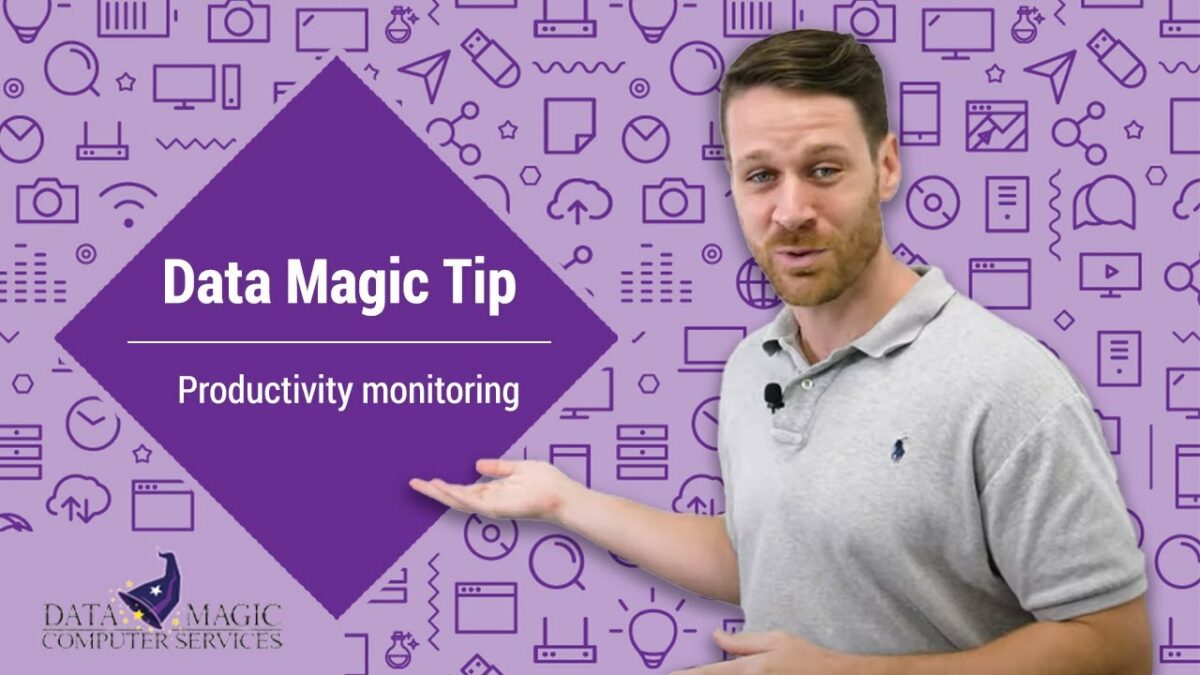Employee monitoring has become a more common question as so many companies move to remote work environments. How do you make sure that your employees are being as productive as they could be? How important is employee monitoring? Does my company need to invest in solutions?
When you consider employee monitoring for productivity, there are other ways to manage employees that might be more beneficial. There are downsides to monitoring. You don’t want to invest in technology that logs your employees to the point that you’re micromanaging them or making them feel negatively toward the company. If you’re concerned about productivity when employees are working remotely, the statistics seem to indicate the opposite is true. 77% of remote workers indicate that they are more productive and 80% experience less stress.
Productivity is not the only reason to monitor your employees. Data breaches are also a concern, and it’s important for companies to realize that most cybersecurity risks are associated with employee use and misuse. This is not usually intentional. However, having protocols in place to be able to log and control employee access to your sensitive data provides a way for you to track issues and guard against threats.
Should You Invest in Employee Monitoring?
This isn’t a one-size-fits-all question. Some companies do well with different types of monitoring. For larger enterprises, a data environment that allows your team to grant authority, or access, based on the employee’s needs for certain data can be an excellent benefit. It’s unobtrusive but serves to log all access and changes to documentation, which provides exactly what you need to delineate responsibility.
For smaller companies, there are many types of software that are developed specifically to monitor employee use. Some of these options take screenshots and even use the webcam to take images. As you might imagine, some of these options can seem fairly off-putting to employees. For most companies, it can be an excellent idea to discuss these monitoring options internally and to get a good understanding of how staff members feel about them. You don’t want to increase employee turnover rates in your quest to improve productivity. A staff that’s happy often works much harder and is more productive, so there is a balance in this decision-making process.
The danger in using very invasive monitoring is that your employees may not feel comfortable with that level of oversight in their homes. It’s also often unnecessary. If managers are screenshotting every time an employee is away from their desk, the employee may feel over-monitored, and it can damage performance. A Harvard Business Review article on the topic indicated that heavy surveillance can damage trust between the company and employees and went on to explain that only 30% of executives believed the data would be used responsibly.
However, with that caveat in place, there are many monitoring options that are unobtrusive and excellent to help with productivity and cybersecurity.
Types of Employee Monitoring
Many of the software and tools you currently use do allow some level of oversight. If your employee is in your company’s database, you should be able to log who they are and what they’re accessing. There are also many tools available. Here, we’ll discuss a few options.
- Microsoft Teams. Microsoft Teams is an excellent organizational tool. It wasn’t developed to monitor activity, but you can use the features to do just that. The Microsoft usage reports and teams reports can help you form a good picture of productivity and use within the Teams environment.
- Monitoring Software. There are many types of monitoring software available, and we’re not going to do any specific reviews here. However, we can make recommendations for the best options, if this is something you’d like to add. Employers are not the only ones using monitoring software. As schools and Universities went online for the pandemic, many made monitoring software mandatory for students, as well. Each of the offerings is slightly different, but most of these applications are installed on the device, and they record information. This might include recording what tabs are open, what pages the user is looking at, monitoring keystrokes, and even turning on the camera to take video and still-frame images. Many of these options also allow you to retrieve screenshots.
- Phone Monitoring. Phone monitoring can be an excellent addition because it allows you to collect and use data that would otherwise be lost if the employee didn’t note it anywhere in the customer’s files. Many VoIP systems have extensive reporting options to help you collect data through this communication method.
- Microsoft 365 Reporting. There are many reports that could be helpful for the employee and employer including:
- Email Activity by User
- Contacts Activity
- Calendar Log Events and many others
Are You Looking for Managed IT Services in the Dallas and Fort Worth area
At Data Magic Inc , we provide robust managed IT services to help our clients make the best decisions when it comes to their technology solutions. If you’re currently interested in learning more about employee monitoring, give us a call. We’re happy to assess your current processes and make recommendations that work for your specific business model.
Every company is different. With new hybrid and remote work models becoming more popular, it’s important to make sure that your cybersecurity is strong and that your staff is well-trained for this new environment.
Any lingering questions? Reach out below!




